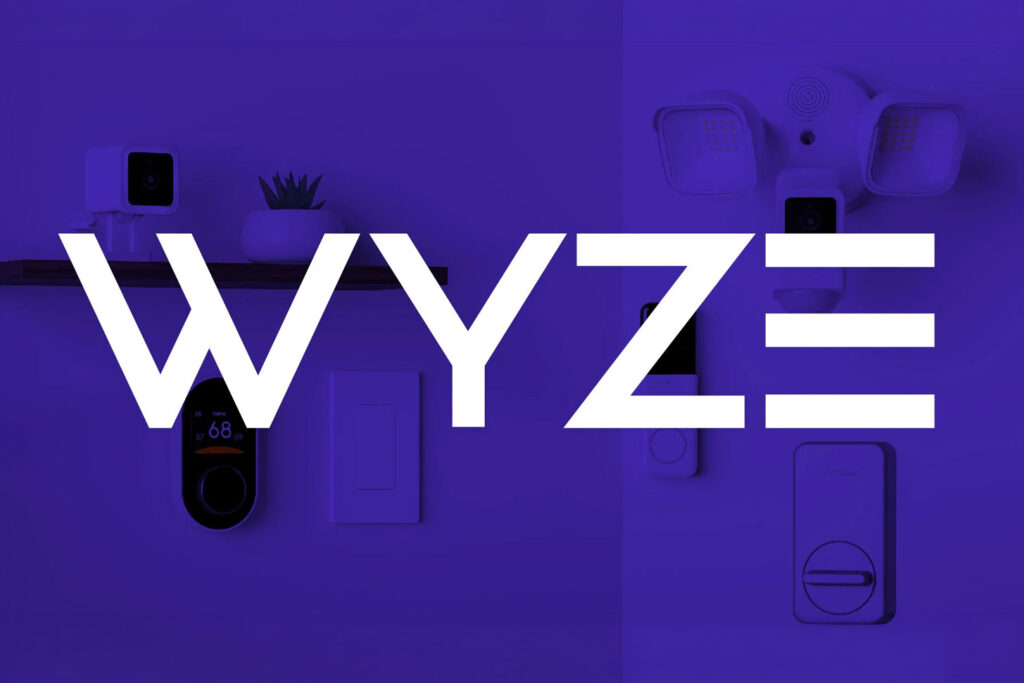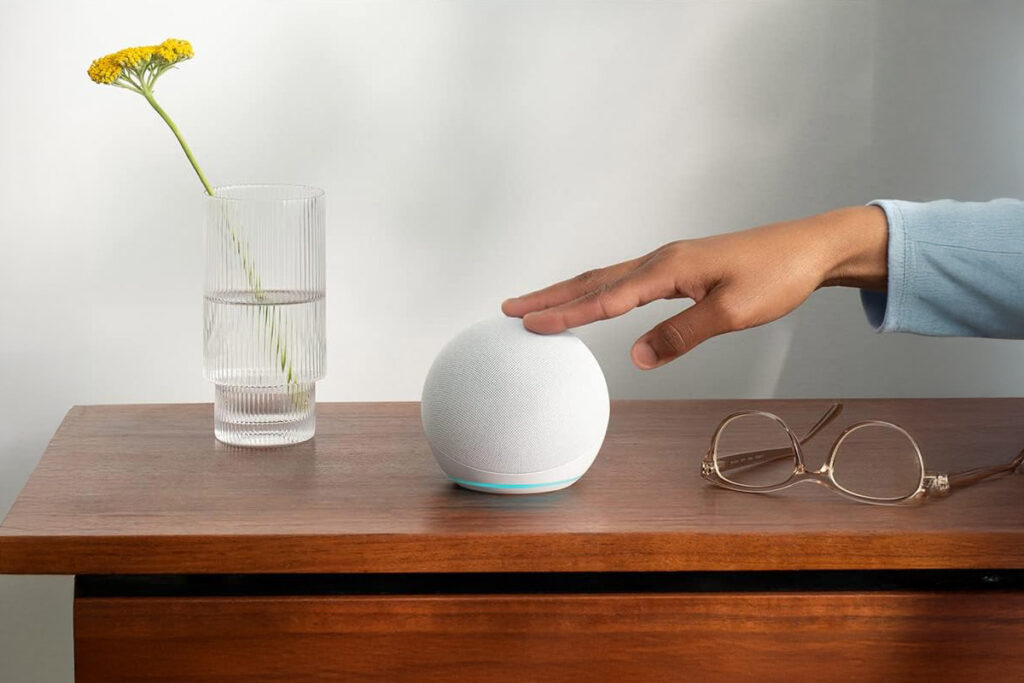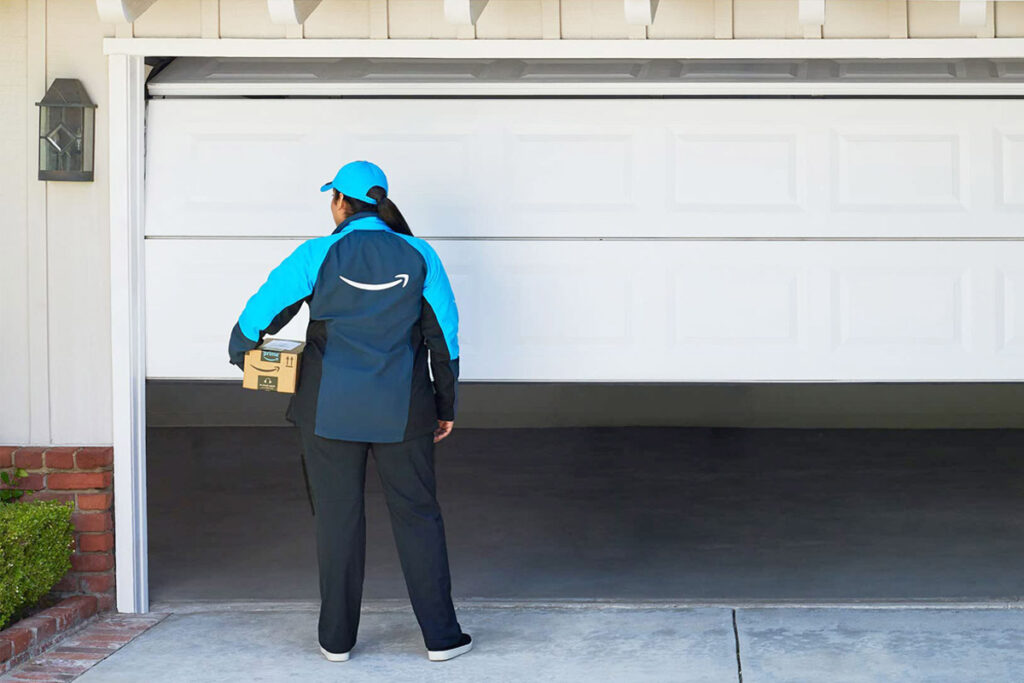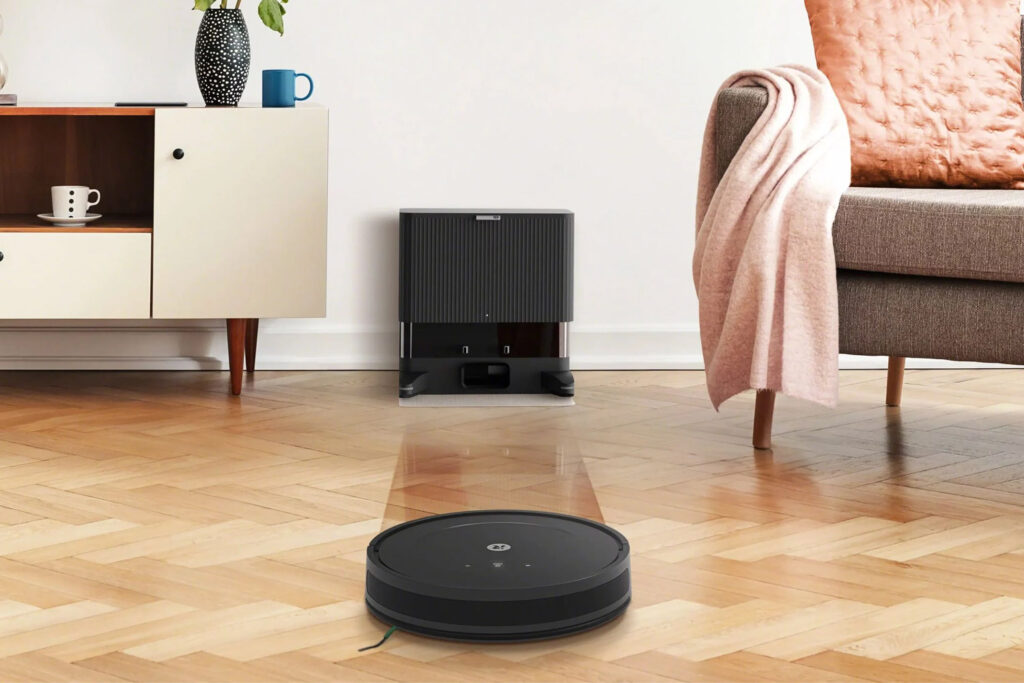In this post:
I’ve used an Ecobee smart thermostat for a while now, and overall it’s worked fine. It keeps the house comfortable, and the app is easy to use. But one thing I didn’t expect was how much trouble humidity could cause. I figured if the temperature was set right, everything would feel fine. That wasn’t always the case.
During the summer, the air felt damp even when the thermostat said 72. That’s when I realized Ecobee actually tracks humidity and has features to help manage it. Some of them helped, but others took some trial and error.
👉 Don't miss: Best Smart Thermostats That Save You Money
How Ecobee Tracks Humidity
Ecobee thermostats come with a built-in humidity sensor. You can see the current humidity level on the thermostat screen or in the app. In my experience, it’s usually close to what my separate hygrometer shows, but sometimes it’s off by a few percentage points. It’s good enough for general use, but I wouldn’t trust it for anything that needs super precise readings.
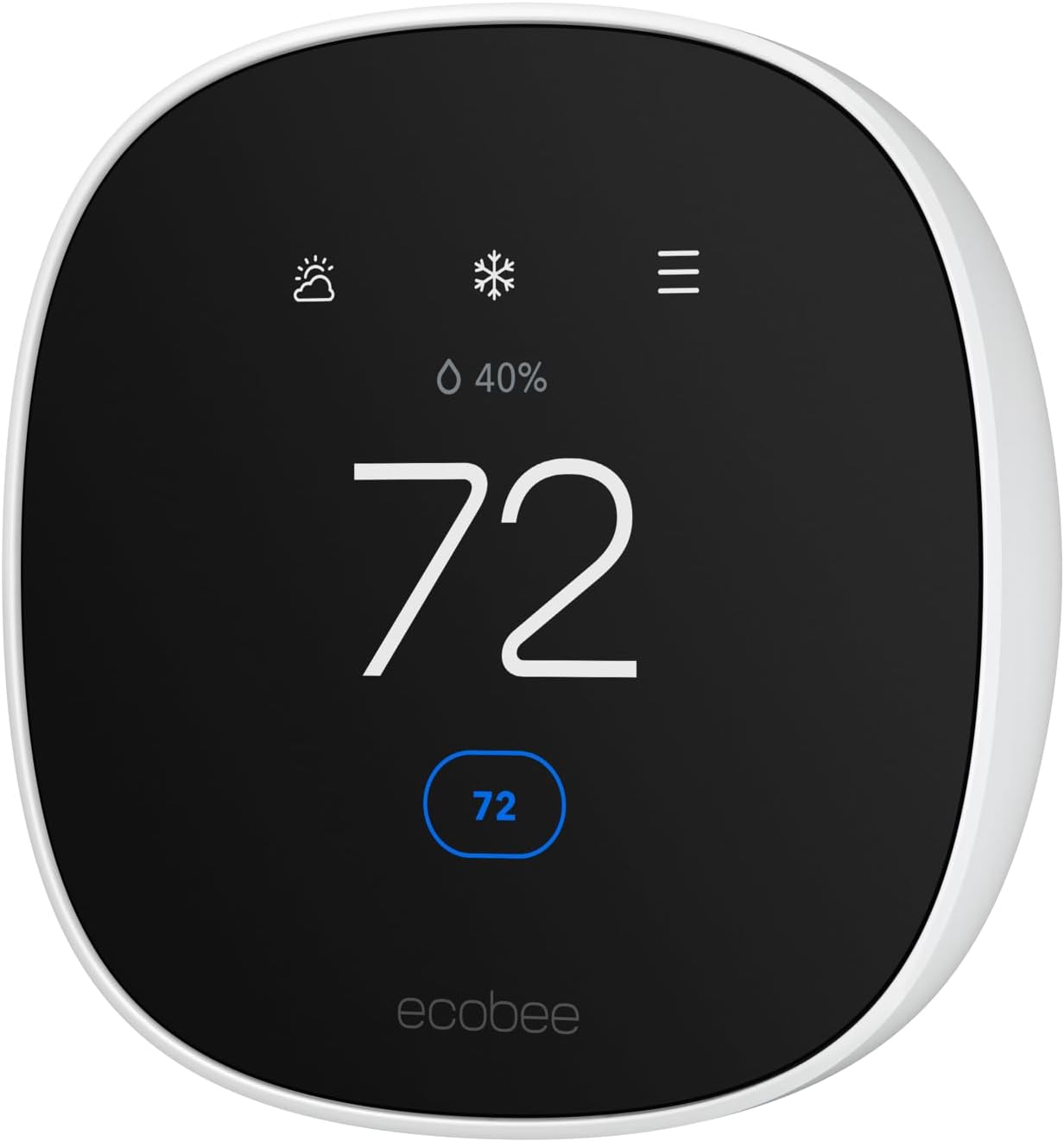
- Touch + app control
- Auto schedule
- Energy tracking
- No C-wire needed
- Supports smart home devices
- 24 VAC HVAC systems
If you use Ecobee SmartSensors, they don’t track humidity—just temperature and motion. So if you have a lot of those around the house, you won’t get extra humidity data from them. That’s something I didn’t realize at first, and I wish the app made that clearer.
What ‘Adjust Temperature' for Humidity Actually Does
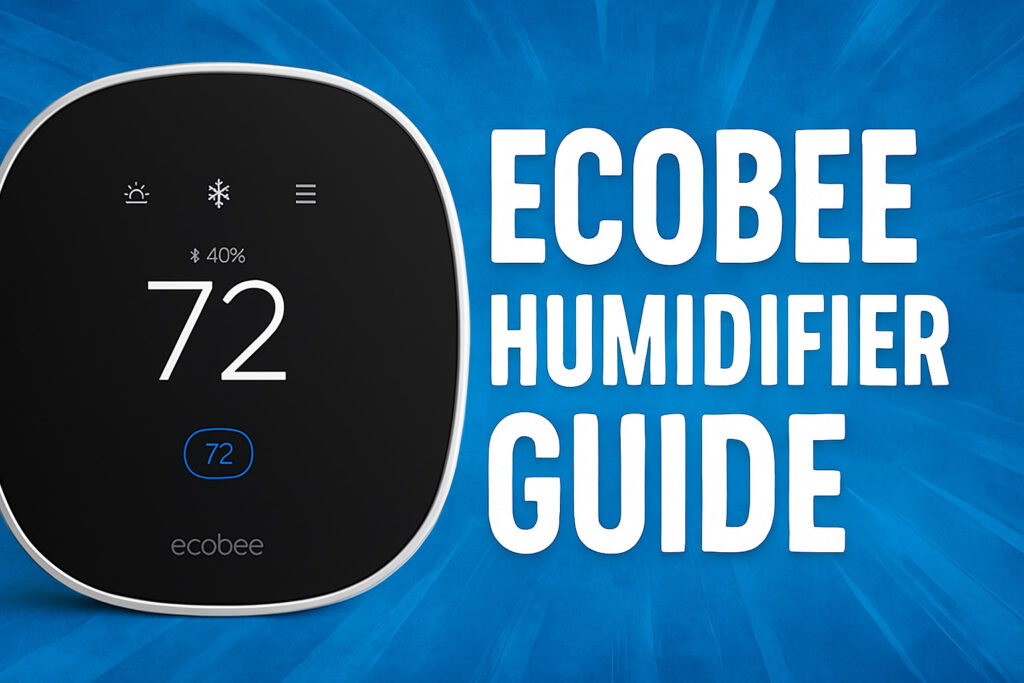
One of the main features for dealing with humidity is called “Adjust Temperature for Humidity.” I saw it in the settings early on but didn’t think much of it. Once I turned it on, I started to notice the thermostat adjusting the temperature slightly, even when I hadn’t touched anything. It wasn’t broken—it was trying to make the room feel better based on the humidity level.
👉 Related reading: Best Smart Garage Door Opener in 2025
Basically, Ecobee looks at both temperature and humidity and adjusts the target temp so the room feels closer to what you expect. For example, if it’s humid, 72 degrees might feel more like 75. So Ecobee will lower the set point a bit to make it feel like 72 again. On paper, it sounds helpful—and sometimes it is. But there were a few times where it felt like the system was cooling more than it needed to. I noticed the AC running longer, especially on humid days, and that bumped up my energy use a bit.
You can turn this feature on or off in the Comfort Settings under each mode (like Home, Away, Sleep). I’d say try it for a week and see how it feels. If your electric bill starts creeping up or the AC won’t quit, you might want to turn it off and manage things manually. It really depends on how sensitive you are to humidity.
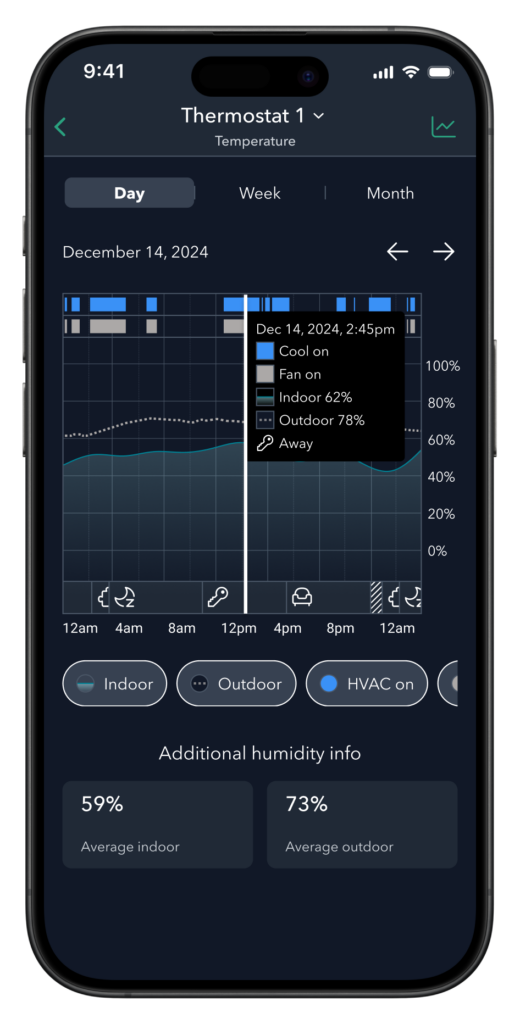
The thing I didn’t like is that the feature runs in the background without a clear indicator that it’s doing something. It would help if the app gave a little message like, “Temperature adjusted because of high humidity.”
How AC Overcool Max Helps (and When It Doesn’t)
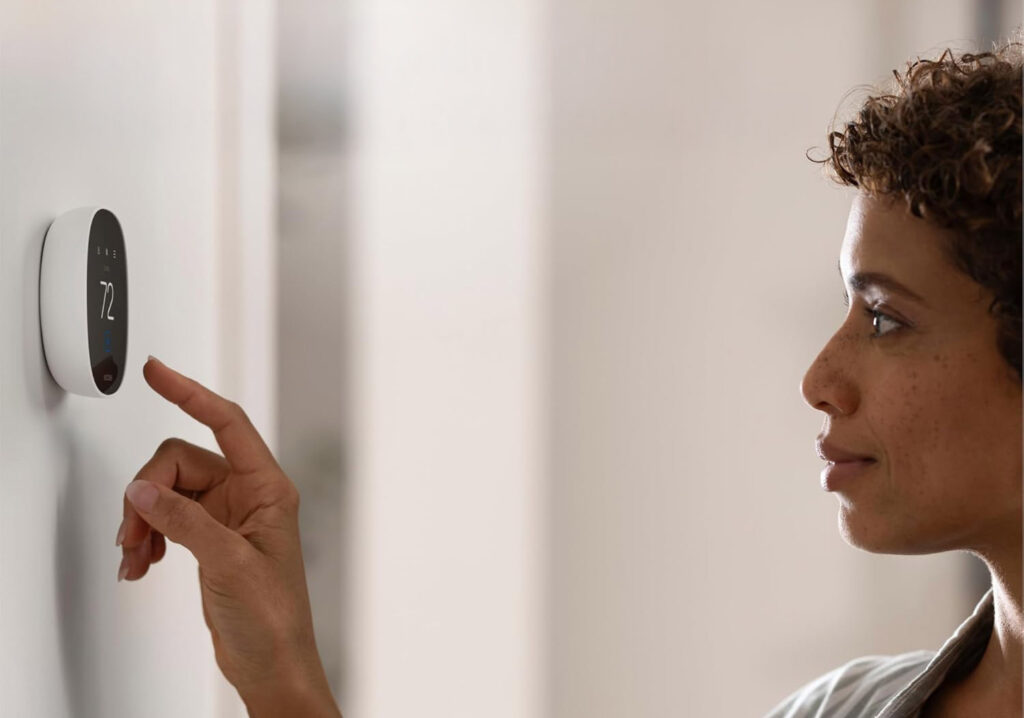
After I messed around with the humidity settings a bit, I came across something called AC Overcool Max. This one’s more aggressive. When it’s on, Ecobee will run the air conditioner longer than usual—not just to cool the air, but to pull extra moisture out. It basically lets your system cool past your set temperature by a few degrees, up to the max you allow.
I tried setting mine to go an extra 2°F at first. It helped a little with that sticky feeling, especially in late summer when the air outside felt thick. But there’s a tradeoff. The house started feeling cold, and the AC ran a lot more. It kind of defeated the purpose of having a smart thermostat if I had to crank up my usage just to stay comfortable.
You can set the Overcool Max in the Equipment settings under Dehumidify Using AC. I’d start with a low number, like 1°F variance, and watch how it affects both comfort and energy use. If you have a newer AC unit with good humidity control, this setting might help. But if your system already struggles or your house gets cool fast, it might just overdo it.
Go to Main Menu > General
> Settings > Installation Settings > Thresholds > AC Overcool Max, then select how many degrees your A/C should overcool the home.
Next, go to Main Menu > General
> System, then Dehumidify Using AC to Enable and set your Preferred Humidity Level.
One thing that bugged me was the lack of feedback. There’s no real notice when Overcool kicks in, so unless you're watching the temp closely, you won’t know why the AC keeps running. I had to dig through the usage history just to see what was happening. It works—but you kind of have to babysit it.
Threshold Settings That Affect Humidity Control
| Feature | Details |
| Built-in Humidity Sensor | Displays current humidity on screen and app |
| SmartSensors | Track temperature and motion only, no humidity |
| Adjust Temperature for Humidity | Modifies set point to account for humidity comfort |
| AC Overcool Max | Runs AC past set point to remove more moisture |
| Compressor Minimum Runtime | Minimum time AC must run once it starts |
| Dehumidify With AC | Allows thermostat to use AC for humidity control |
| Separate Dehumidifier Option | Ecobee can control external dehumidifier if connected |
Once I got deeper into the settings, I found out that a lot of what Ecobee does with humidity also depends on something called threshold settings. These are hidden under the Equipment menu, and honestly, they’re not explained that well. I had to read through support pages and trial a few combinations before I understood what they were doing.
One of the big ones is “Compressor Minimum Runtime.” This tells the system how long the AC has to run once it starts. Mine was set to 5 minutes by default. That’s fine for most people, but if your home cools quickly and shuts off too soon, it might not remove much moisture. I tried bumping it to 10 minutes, and that helped a bit with consistent humidity levels.
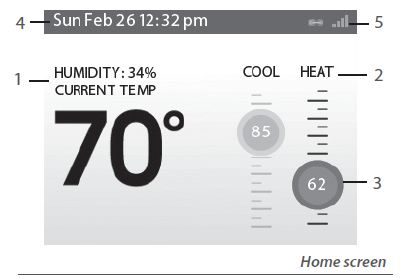
Another setting is “AC Overcool Max,” which I already talked about, but there’s also a “Dehumidify With AC” toggle. This one needs to be on if you want any of the humidity features to work. I didn’t realize that at first. It was off by default when I installed my Ecobee, and none of the dehumidifying features worked until I turned it on.
There’s also an option for a separate dehumidifier, but I don’t have one hooked up, so I left that alone. If you do have one wired into your HVAC system, Ecobee can control it too—but I can’t say how well that works since I haven’t used it.
My main complaint here is that these settings aren’t labeled clearly, and the thermostat doesn’t explain how they interact. You kind of have to guess and test to get things working how you want. I don’t mind tweaking things, but I know a lot of people just want it to work without digging into menus.
Tips That Actually Helped Me Get Better Humidity Control
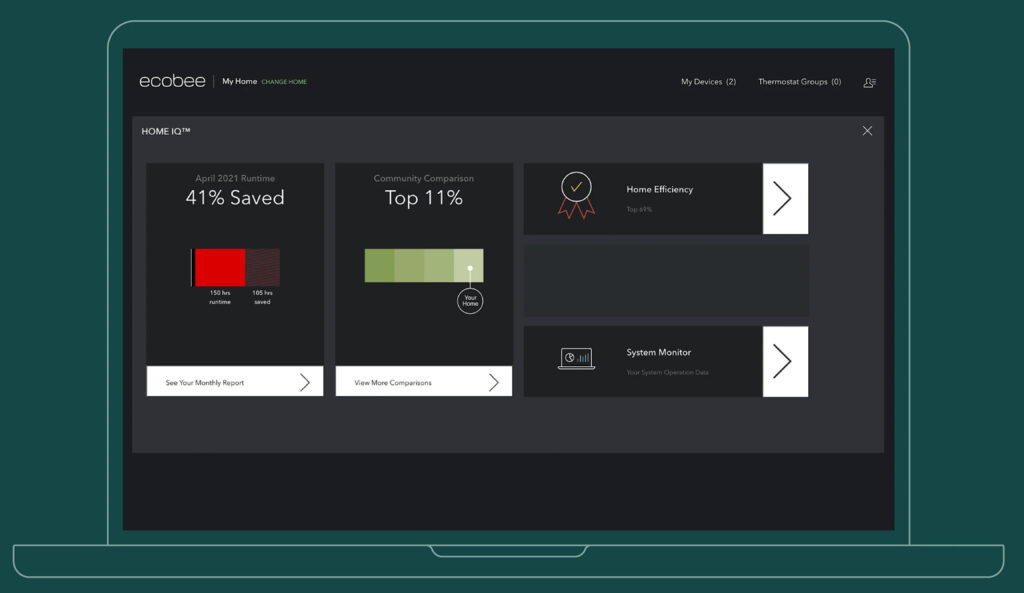
After enough trial and error, I found a few things that actually made a difference. Some came from online forums, and some just from messing around with the settings myself.
The biggest one was learning to treat the Ecobee as a helper—not something that’s always going to get it right. I stopped expecting perfect comfort and started using it more like a guide. I kept “Adjust Temperature for Humidity” turned on during the summer, but I lowered the Overcool Max to 1°F. That helped reduce the sticky feeling without making the house too cold or running the AC too much.
I also looked into getting a separate dehumidifier. My HVAC system doesn’t handle humidity very well on its own. A small standalone unit made a bigger difference than I expected. Ecobee doesn’t control it, but once the room’s drier, the thermostat doesn’t have to work as hard.
Another thing that helped was checking humidity at different spots in the house. Ecobee only shows humidity from the main thermostat, not the SmartSensors. I didn’t realize how different the upstairs and downstairs levels were until I bought a cheap hygrometer for comparison. If the thermostat is in a hallway or a spot with bad airflow, the readings might not reflect what you actually feel in the living room or bedroom.
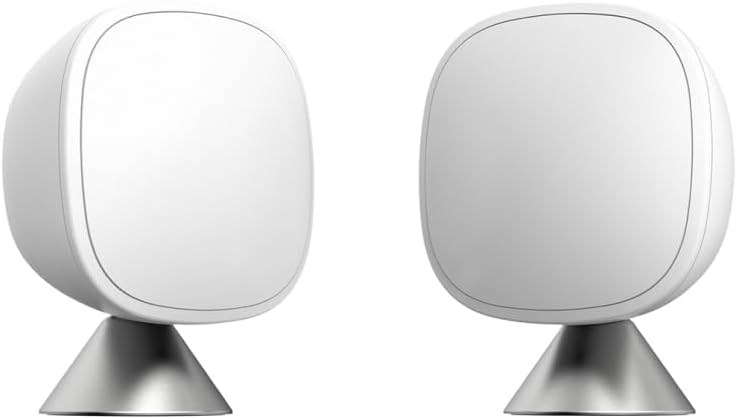
- Tracks room temp + motion
- Auto comfort adjust
- Energy saving
- App control
- Easy placement
- Motion alerts with subscription
I still think Ecobee should give more control over how aggressive the humidity features are. And it would help if they added more feedback in the app when changes happen. But once you know what to tweak, you can get things feeling pretty good without constantly babysitting it.
When To Let Ecobee Handle It and When to Step In
After messing with the settings for a while, I’ve learned when to trust Ecobee and when to make changes myself. For the most part, I let it handle humidity during mild weather. It does a decent job when the outside air isn’t too extreme. But when it’s super humid or when seasons change, I check in more often.
For example, in late spring and early fall, I usually lower the Overcool Max or turn off “Adjust Temperature for Humidity” altogether. That’s when the AC doesn’t need to work as hard, and letting it overcool just makes the house too cold. But in the middle of summer, I’ll leave those on and deal with a little extra cooling to keep the air feeling drier.
There were also a few times I thought something was broken. The thermostat would say 72, but the air felt sticky or uncomfortable. I’d check the humidity, and it was around 60%. That’s higher than I like. I’d go into the app, double-check the dehumidify settings, and sometimes just restart the system. Most of the time, that helped.
The thermostat won’t always know what feels right to you. If something feels off, it probably is. Trust your own comfort. If your AC is running too much, turn down the Overcool Max. If it’s not running enough and it feels muggy, turn it up or adjust the runtime thresholds. It takes a little work, but once you get a feel for how your system behaves, it’s easier to keep things steady.
Final Thoughts
If you’re dealing with similar issues, check the equipment settings and comfort settings first. Most problems I had came from something small being turned off or set too high. I wish Ecobee gave better feedback or alerts when things aren’t working right, but for now, it’s just something you have to check on your own now and then.
Continue reading:



